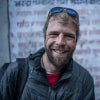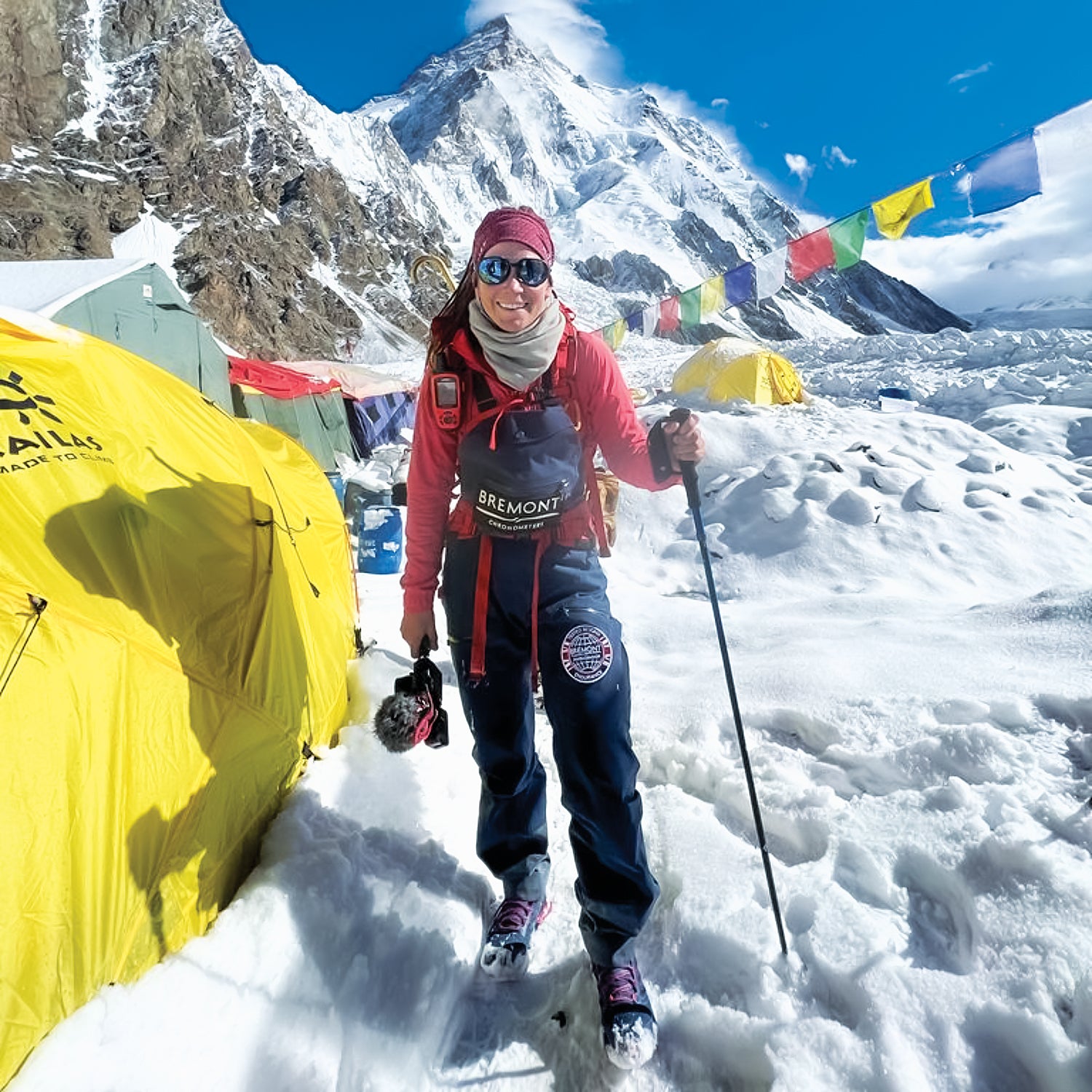It was late August when Kristin Harila answered our call from her grandmother’s house in Norway, where she was staying between expeditions in Pakistan. Harila, a 36-year-old former elite cross-country skier, had just sold her apartment in Oslo to help fund her quest to become the fastest person to climb the world’s 14 peaks above 8,000 meters (26,246 feet). At the time of our interview, Harila still had three peaks remaining to surpass Nirmal “Nims” Purja as the fastest to ascend all 14. In late October, Harila eventually conceded that beating the record would not be possible—she was unable to gain access to China to climb Cho Oyu and Shishapangma.
OUTSIDE: To complete the record, you need to climb 26,906-foot Cho Oyu and 26,289-foot Shishapangma, the latter fully in China, which is still closed due to the pandemic. Have you made any progress in securing permission to climb there?
KRISTIN HARILA: I am still optimistic. Of course, the COVID situation doesn’t make things any easier, but we are willing to quarantine both in Tibet and in Nepal if we have to. I think we just have to try what we can until we cannot.
Was watching the documentary 14 Peaks instrumental in your decision to attempt to break the record?
The movie came out after I decided, but of course I knew about what [Purja] had done and it was an inspiration for me. I wanted to show that it’s possible for a woman to do something that many people believe is only possible for a guy. I was thinking more and more about the 8,000-meter peaks. I really wanted to do them all, and I thought: OK, if I’m going to do them all, I want to do them fast, because last year I was 35, and I don’t have kids. I want to have kids, and I think that if I am lucky enough to have kids, then I won’t want to climb 8,000 meters for a while, because I won’t want to be away for so long.
Your stated goal is to prove that there is a place for women in the world of high-altitude mountaineering. Have you seen women treated unfairly?
Yes. In the industry, the brands support 90 percent men, even in Norway. If you look at the pages where they present their athletes, it’s almost entirely men. This isn’t just one company; it seems to be all of them.
On K2, my group had more women than men this year. But I still couldn’t find a down suit for women—they were only produced in men’s sizes. Big international brands came out with new collections just for men. For me it’s like they’re saying, “Girls can go hiking, but the high mountains are for the cool men.”
It also seems to be more socially acceptable for men to leave families behind when they go climbing than it is for women.
It is. We see in the community all the time that it’s very acceptable for a man to leave a small kid at home, while for the women, not at all. But also I’m seeing more mothers coming to climb. Like my friend Becks Ferry. She has five kids and she has climbed, I think, six 8,000-meter peaks now. I really respect the mothers that are going out and doing this.
Now that it’s possible to helicopter between mountains and to climb all 14 peaks in a matter of months, some feel that this style of ascent doesn’t fall within the category of “fair means.”
First of all, I think as long as people are telling the truth and are open about how they climb, then it’s OK. We shouldn’t care if someone wants to climb Everest in three weeks. If they use hypoxic tents and fly directly to Base Camp, pour on the oxygen and have four Sherpas, I think it’s OK. It’s a different type of climbing, in a different style, and it’s changing, but the rest of the world is changing also.
I have to say it’s very different—totally different—to climb a mountain without ropes. It’s so much easier to just put the jumar in front, rest, pull yourself up. Like on Gasherbrum I, it was very steep. We pushed like 1,000 meters up in only seven and a half hours, but it was very long getting down, because we had to go backward using our ice axes. Of course, there were no people and so no steps. When you go on Everest and K2, it’s like going on steps all the way, and with ropes there it’s so much easier.
You want to share the record with your Sherpa guides, Pasdawa and Dawa Ongchu.
I wanted to give them the opportunity to climb them all, because I think it’s nice if we can show the world the job that they do, how important they are. But of course they have to want to, because it’s not an easy job for them or for me to climb to 8,000 meters. They always have an opportunity to not climb if they don’t want to. I don’t pressure them.
On the mountain we do different things, of course. They carry more, they fix more ropes than I do. But it’s not like they carry me, or that I don’t carry anything. Like on K2, I had 20 kilos [44 pounds] in my pack all the way, because two members of the team were out front fixing ropes. I can carry, and I go in front sometimes. But when it’s a very hard day, they, of course, fix ropes.


